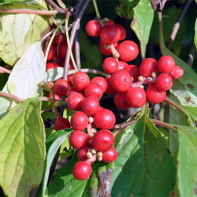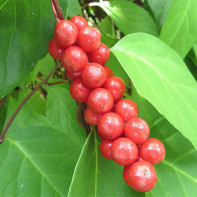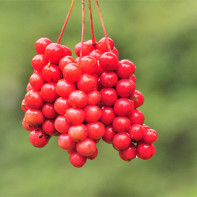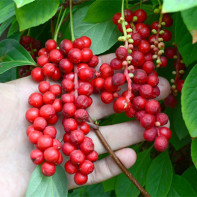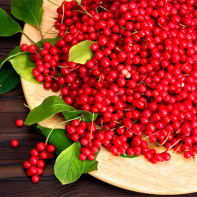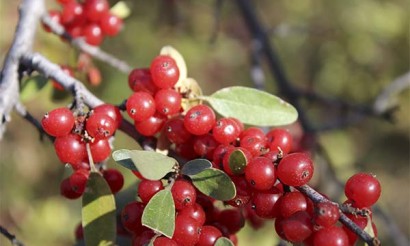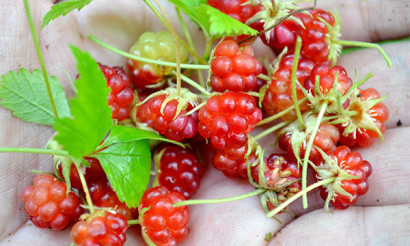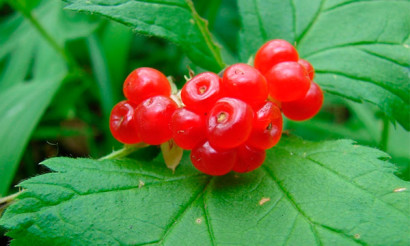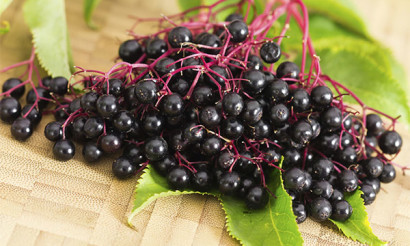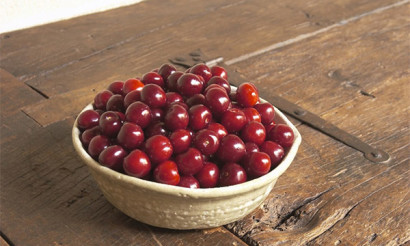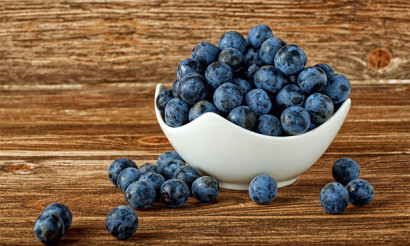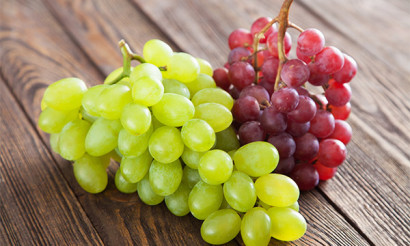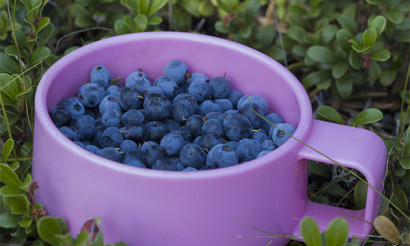Chinese lemongrass: useful properties and contraindications
Chinese lemongrass or Far East - a liana of the Schizandra family, which has nothing in common with lemons, except for the characteristic citrus smell that exudes all parts of the plant.
- What the lemongrass looks like and where it grows
- Botanical characteristics
- Types
- Composition and calories
- Useful properties of lemongrass
- General benefits
- For Women
- For Men
- In pregnancy
- Breastfeeding
- For kids
- For weight loss
- Useful properties of lemongrass leaves
- Lemongrass Tincture Usage
- The usefulness of lemongrass juice
- How helpful is lemongrass syrup
- Is lemongrass tea useful
- Lemongrass oil: properties and application
- Useful properties of lemongrass seeds
- Lemongrass application in folk medicine: Recipes
- Tonic wine from lemongrass
- Fresh berries in sugar
- Tincture from seeds
- Lemongrass in cosmetology
- For Face
- For Hair
- Cooking
- Lemongrass jelly
- Lemongrass Berry Compote
- Lemongrass with Honey
- Harm and Contraindications
- How to gather and store lemongrass
- How to Dry
- How to brew lemongrass
- Tea from berries
- Tea from leaves
- Tea with lemongrass and rosehip
- Green Tea with Lemongrass
- How to boil lemongrass jam
- Lemongrass Berry Jam
- Lemongrass jam with apple juice
- Interesting facts about lemongrass
The medicinal properties of the lemongrass have been known for a long time. In a Chinese treatise on medicinal plants from 1596, lemongrass was placed next to ginseng. The hunters of the Amur region, the Golde, used to eat fresh and dried berries of the lemongrass to recover their strength during long treks through the taiga.
What lemongrass looks like and where it grows
Botanical Characteristics
Lemongrass is a beautiful deciduous liana with a dark brown trunk and large oval leaves.
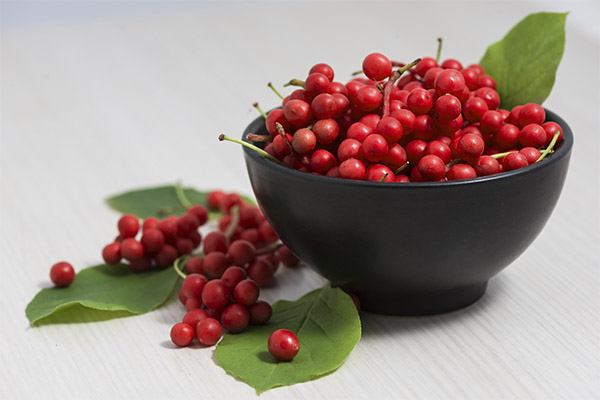
The trunk of the plant is very strong, thin - does not exceed 3 cm in diameter, the perennial part is covered with a dark rough bark, the annual shoots are light yellow and smooth. The long liana (up to 15 m) winds spirally around trees and artificial poles.
The large elliptical leaves are dark green and smooth on the front side, paler and covered with faint fuzz on the underside. They are attached to shoots by pinkish-red petioles 2-3 cm long, turning yellow and falling off in autumn.
Inflorescence of 3-5 buds is located in the leaf axils of one-year shoots. It blooms 1.5-2 weeks in mid-June with small (1.5 cm in diameter) white flowers, acquiring a pinkish tint towards the end of flowering.
Lemongrass belongs to monogamous plants - one specimen has separately-sexed flowers. Female flowers have no stamens, which is their main difference from male flowers. The sex ratio on a single liana depends on weather conditions.
The fruit, a multi-berry, is formed from the female flower. It is shaped like a bunch of small irregularly rounded berries, weighing 0.5-0.7 g. The cluster petiole is up to 5 cm long, with up to 20 berries in a cluster, and with an average weight of 5-7 g.
The berry contains 1-2 yellow-brown kidney-shaped seeds. The seeds are easily separated from the pulp. 1,000 seeds weigh 17-20 g.
Berries begin to redden in the second half of August; full ripeness occurs in September. The taste of the juice of berries is sour with a lemon aroma, the skin is dense with a bitter aftertaste. The seeds add a spicy, peppery note to the flavor profile.
Professor A.P. Nechaev described the taste of the berries as bitter-sour-sweet-tart-salty. The Chinese name of the lemongrass "Wu-wei-tzu" translates as "fruit of five flavors." The brush stays on the shoots until winter.
Species
The species number of the Schizandra family is not precisely determined and according to various sources includes from 14 to 25 species. Habitat - Asian countries: Vietnam, China, Korea, India, Burma, Japan.
In Russia there is one representative of this family - the Chinese lemongrass or far-eastern. Before the Ice Age (1.8 million years ago) this relic liana was widely distributed in the middle latitudes of the Northern Hemisphere. At present, it is an endemic species of taiga forests of Primorsky Territory and Priamurye. It grows on riverbanks and slopes of hills, preferring Manchurian pine-broadleaved forests with well-drained soil.
In addition to the fact that all parts of this plant have a powerful health-promoting effect, the liana is very beautiful in any season. Even in winter, brushes of bright scarlet berries look spectacular against the background of snow. Therefore, it is strange that domestic breeders only paid attention to this taiga miracle in the early 80s. The first variety "Pervenets" was included in the State Register of Breeding Achievements in 1999.
Now there are 4 such varieties:
- Pervenets (1999).
- Myth (2011).
- Volgar (2011).
- Debut (2013.).
The largest fruits have Debut. The berries of this variety have the highest concentration of sugar (4.3%) and vitamin C (9.7%). Record-breakers in terms of yield are Myth and Volgar.
All 4 varieties grow well in the conditions of the average strip.
Composition and calories
The main mass of fresh berries lemongrass is water - 85%. The remaining 15% of the dry matter includes:
- 27-30% organic acids (citric, malic, tartaric and succinic);
- 20% sugar;
- 4% pectin;
- 1% tannins;
- 0.8% of substances with P-vitamin activity;
- 0.25% of ascorbic acid (vitamin C).
1.15% of ash containing macro- and micronutrients:
- potassium;
- phosphorus;
- magnesium;
- copper;
- calcium;
- manganese;
- nickel;
- titanium;
- molybdenum;
- lead;
- tin;
- zinc.
Lemongrass seeds contain:
- 30-34% unsaturated omega class fatty acids (mostly oleic and linoleic);
- 2% essential oil;
- 0.12% lignans (phytohormones);
- 0.03% vitamin E;
- Ashes - the same micro and macronutrients as in berries.
Stimulating, energizing and tonic effect of phytohormones contained in lemongrass seeds was discovered by Soviet scientist D.A. Balandin. He gave it the name "schizandrin" - from the Latin name of this liana Schisandra chinensis - schizandra or schizandra.
The bark is rich in essential oils with a subtle spicy lemon aroma, for which it is so valued by perfumers.
The total caloric value of 100 grams of lemongrass berries is 11.6 kcal. The daily dose of berries, needed to satisfy the need of an adult for vitamin C, is 50 g, that is, 5.8 kcal or 0.5% of the daily requirement.
Useful properties of lemongrass
General benefits
Lemongrass was in special esteem among Chinese healers. By its therapeutic properties, the miracle lemongrass was put in second place right after ginseng. This recognition was due to the high content of vitamins and trace elements in all parts of the plant.
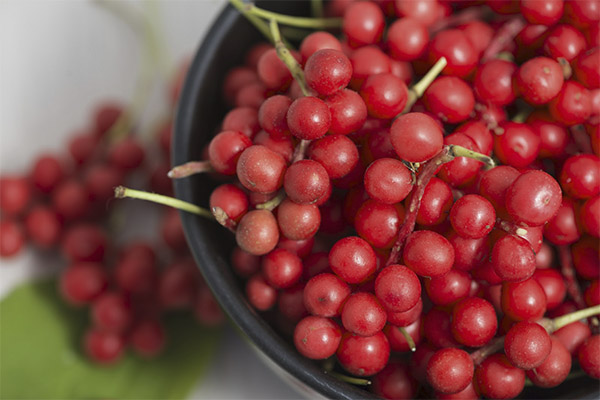
- The main hero and warrior with ailments and bad moods is schizandrin. This phytohormone enhances the excitation processes in the central nervous system, sharpening reflexes, tones and helps to cope with increased stress, both physical and psycho-emotional.
- Schizandrin increases the excitability of the central nervous system and stimulates the heart and respiratory system. It is a natural stimulant with a powerful adaptogenic effect.
- Taking a tincture of berries or simply chewing the leaves of a far-eastern liana allows you to adapt (adapt) to physical, mental and psychological stress during an exam, a competition or a heavy night shift.
- Vision, including night vision, is sharpened - a quality especially appreciated by hunters. During World War II the lemongrass berries were part of the obligatory ration for pilots.
- Chinese lemongrass preparations are prescribed for asthenic syndrome, during convalescence after severe infectious diseases, with vegetovascular dystonia.
- Schizandrin and schizandrol also exhibit hepatoprotective activity, that is, they protect the liver from the effects of adverse factors and violations of the diet.
- Lemongrass is shown in sexual dysfunction developed against a background of neurasthenia.
- Decoction of the fruit is used to reduce blood sugar.
- 2 grams of powdered seeds, taken even once, normalize the composition of gastric juice - reduce increased and increased reduced acidity.
For women
The composition of lemongrass includes plant hormones - phytoestrogens, which support the hormonal balance in women at the onset of menopause and during PMS. Tincture of the berries and essential oil of magnolia-vine will support the beautiful representatives of mankind in this difficult period of their lives - will reduce irritability, help to combat depressed moods.
When infertility and problems with the ovaries is recommended a 3-week course of treatment with an alcoholic tincture of berries - twice a day, 15 drops.
When inflammation of the appendages will help decoction lemongrass with herbs. Biostimulants, which are in it, will arrest the focus of inflammation, strengthen the immune system, improve the mood.
Mix in equal proportions:
- fruits of lemongrass and chestnut;
- Plantain and cowberry leaves;
- herb St. John's wort;
- Root of ginseng and broomstick.
Grind and pour 2 tablespoons of prepared raw materials with 2 cups of boiling water. After 30 minutes, strain. Within a month, drink 150 ml of the drink before a meal three times a day. Prepare a decoction daily.
For men
Lemongrass is a natural aphrodisiac that increases potency. Therefore, lemongrass tincture can be used to treat sexual dysfunction in men as an alternative to medications.
One of the causes of reduced potency is inflammation of the prostate. In this case, tincture of lemongrass will arrest the focus of inflammation, strengthen the immune system and reduce anxiety and depression.
Obesity is the second cause of reduced potency. Polysaccharides present in the tincture help to cope with this problem. They contribute to the rapid conversion of food into energy, preventing the formation of fat deposits.
The third cause of erectile dysfunction is stress. Schizandrin, which is part of the seeds of the lemongrass, will remove the psycho-emotional stress and improve your mood.
Tincture of lemongrass to increase potency can be prepared on vodka or water. In the first case, the therapeutic dose will be 30 drops three times a day, in the second - half a glass 2 times a day.
When pregnant
To the reception of preparations on the basis of lemongrass during pregnancy should be treated very carefully:
- carefully study the list of contraindications given in this article;
- Be sure to get a consultation with a gynecologist;
- the means to take only after the approval of the supervising doctor.
In the absence of contraindications, you can take lemongrass syrup. He smoothes the symptoms of toxicosis, raises the blood pressure in case of vegetovascular dystonia and asthenia after abnormal childbirth and abdominal surgery.
When breastfeeding
The intake of any preparations of lemongrass during the breastfeeding period is not desirable in order not to provoke an allergy in a newborn baby.
It is possible to use syrup from lemongrass berries as a preventive measure during flu epidemics. But in this case it is important to closely monitor the condition of the child's skin and his behavior.
For children
Pediatricians do not recommend using lemongrass for the treatment and prevention of diseases in children under 12 years of age.
After reaching this age and in the absence of contraindications, children can be introduced into the diet of jam or syrup from lemongrass berries:
- For the prevention of viral diseases. The likelihood of catching the flu will decrease by 4 times.
- Treatment of dysentery.
- To alleviate manifestations of stress and to raise the tone during exams or sports competitions.
For losing weight
Causes of gaining excess weight:
- Sluggishness and apathy leading to a sedentary lifestyle;
- Craving for high-calorie and sweet foods;
- metabolic malfunction.
Lignans (Schizandrin and Schizandrol), which are part of the lemongrass seeds, translate the body into a different mode of operation, having a stimulating and tonic effect. As a result of the action of these phytohormones there is a normalization of metabolism and metabolism, a person feels alert and active.
Lemongrass preparations can be made or bought in the pharmacy. The ability of lemongrass to accelerate metabolism does not depend on the form of the drug, so choose based on your preferences: seeds, berries, pills, syrup, vine.
Take during breakfast and lunch in the following doses:
- berries fresh or dried - 5-6 pieces;
- alcoholic tincture - 25-30 drops;
- Berry juice or decoction of the bark - 1 tsp.
Observe the dosage to avoid health problems - headaches, allergic rashes, high blood pressure and insomnia.
Do not use lemongrass in the afternoon because of its tonic effect.
Useful properties of lemongrass leaves
The vegetative parts of the vine (leaves, stems and bark) contain fewer tonic substances than the fruits and therefore have a milder effect on the body.
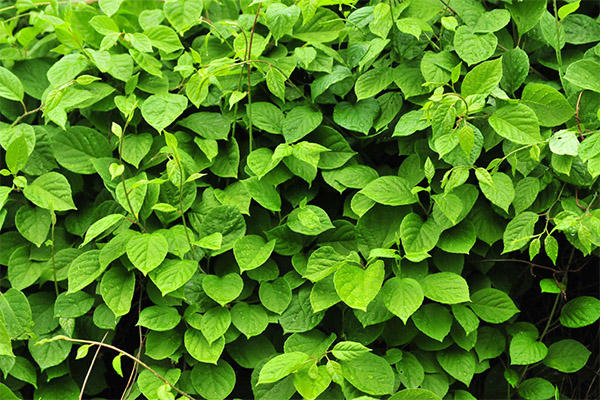
Chewing fresh green lemongrass leaves is very useful. 1-2 leaves will be enough to feel a burst of energy.
Dried leaves can be used to brew a vitamin and tonic tea. Lemongrass leaves can be used alone or as part of a medicinal collection. The benefits of leaf tea are described earlier in this article.
Information on how to properly harvest and dry the leaves will be given below in the chapters "When to harvest and how to store lemongrass" and "How to dry lemongrass".
Use of Lemongrass Tincture
Tincture of lemongrass from fresh and dried berries removes fatigue, invigorates, whets the appetite and puts the immune system on alert. It is used for the prevention of acute respiratory infections, toning up and the treatment of nervous exhaustion.
Below are two recipes for making tincture:
- From fresh berries. Pour the berries in 70% alcohol in a weight ratio of 3:1. Place in a dark place for a day. Before using 20 drops of tincture diluted in 50 ml of water. Take three times a day for half an hour before a meal, but no later than 6 hours before going to bed.
- "Strong. Grind 20 grams of berries in a porcelain mortar or ceramic. Do not use utensils made of metal. Put the berry pulp in a bowl of dark glass and pour 100 ml of 70% alcohol. Insist, shaking occasionally. After 10 days, squeeze through gauze. After 2 days, the tincture can be consumed in the morning on an empty stomach 30 drops over 3 weeks.
The benefits of lemongrass juice
The juice of the lemongrass berries used in cooking for imparting a citrus flavor, tart taste and tonic effect of drinks and syrups. It is also added to candy fillings, cilantro and jams. In the wine industry it is used for blending wines.
Juice is useful for gastritis with low acidity. 1 tbsp. a day, taken before breakfast and lunch, will help to cope with this problem.
Juice is prepared from freshly picked berries. Keep the berries for 24 hours in the refrigerator to soften. Then squeeze the juice with a press, making sure that the crushed seeds do not get into the juice, as they give it a resinous taste. In the resulting juice dissolve sugar in a ratio of 1:2, pour into containers of dark glass. Such a juice store in a cool place 2.5-3 years.
To strengthen the immune system is recommended to drink juice, diluted in half mineral or plain water.
What is the usefulness of lemongrass syrup?
The processing of berries in the preparation of the syrup does not reduce the useful properties inherent in this plant.
- Syrup is recommended to use in case of loss of strength, headaches, upset stomach.
- Phosphorus, which is part of the lemongrass berries and seeds, aggravates vision, including night vision.
- Syrup is indicated for people with vegetovascular dystonia and asthenic syndrome, because it can raise blood pressure.
- With colds, the syrup is used as an expectorant, which improves the expectoration of sputum.
- Syrup is taken as a tonic, adding to various drinks.
- It helps to cope with a hangover because of the tonic and mild analgesic effect.
- When an infectious kidney disease syrup antimicrobial property contributes to the elimination of inflammation and rapid recovery.
- Syrup is indispensable in the diet of people watching their weight.
Is lemongrass tea useful?
Tea from the leaves and bark of the lemongrass has long been used against scurvy. This drink has a pleasant taste and a delicate flavor.
In ancient China, lemongrass tea was mainly drunk by men as it was believed to give them special strength and stamina.
Lemongrass tea is useful as part of the complex treatment of the following diseases:
- depressive conditions;
- hormonal imbalances;
- bronchitis and pneumonia;
- chronic liver and kidney disease;
- stomach upset;
- vision problems;
- hypotension;
- overweight.
Lemongrass oil: properties and application
Essential oil is contained in varying proportions in all parts of the liana. It is most of all in the bark and seeds.
At home, it is impossible to obtain the essence of lemongrass, it is produced on an industrial scale by extraction and pressing methods. Ready-made oil can be purchased in pharmacies. Available in vials and soluble capsules.
Essential oils from lemongrass are widely used in cosmetology and are included in tonic creams for the care of aging skin. They fight pigment spots and tighten pores.
The essential oil is used in the treatment of fungal skin diseases, herpes and scabies. It is effective for pediculosis, eliminates discomfort and swelling after insect bites.
Oil lemongrass in capsules is used as an adaptogenic and restorative means for vitamin deficiency, being in extreme conditions and chronic fatigue. The use of the oil increases efficiency by 4 times.
Oil of lemongrass in capsules is also shown for use in pupils and students during examinations in order to cope with the psycho-emotional stress and help absorb a lot of information.
It is used by athletes, because it is not a dope, has a powerful tonic effect and mobilizes all the resources of the body to achieve the goal.
The oil is taken in the fall and spring of double courses of 10 days and a 20-day break in between. With a significant loss of strength and depressed mood is acceptable to take 3-4 capsules at the same time.
To make sure that you have no contraindications to the intake of lemongrass oil, it is necessary to consult a doctor beforehand.
helpful properties of magnolia-vine seeds
On the basis of the seeds of lemongrass prepare a tincture and powder. Their use restores the work of all systems of the body, mobilizes it in extreme conditions, helps to overcome drowsiness and reduced attention span. Tincture is recommended for hyperacidity of the stomach, hypotension, decreased hearing and vision.
Taking a powder of seeds 1-3 grams per day reduces the feeling of fatigue with considerable physical exertion, for example, when working a night shift. The lift of energy is felt in half an hour after taking the powder and lasts up to 8 hours. Habituation does not develop. Course duration is 3 weeks, the maximum effect of taking the powder is observed at the end of the second week of the course.
The use of lemongrass in folk medicine: recipes
Decoctions and tinctures of lemongrass have long been used in folk medicine. They treat various ailments: kidney disease, tuberculosis, loss of strength, slowly healing septic wounds. They enhance visual acuity. And for women and men, these potions return the joy of intimate life.
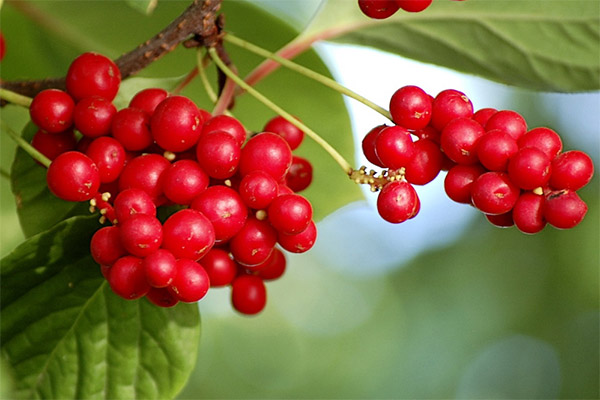
Here are a few recipes.
Tonic wine from lemongrass
When the juice is made, a squeeze remains, which has a lot of pulp. It can be used to make wine. First you need to extract the seeds, otherwise the wine will be bitter and have a resinous smell. Then pour water over the resulting mass. In 2-3 days, you need to drain the sediment, and add sugar to the must and dilute it well with water. Wait for the end of the fermentation. Drink in the summer at the hottest time, diluted by half with water (better spring or well water).
Fresh berries in sugar
This is a winter preparation for keeping fit. Pick the berries and dry them on a paper towel. Place in a jar, stirring with sugar. Take twice as much sugar as the berries. Cover jars with parchment and tie. Store in a cool place. You can eat berries just like that or add them to tea or pastries.
Tincture of the seeds
The seeds extracted from the pulp when making wine, rinse thoroughly. Then grind them well and add 3 parts of vodka (by weight). After 14 days of aging in a dark place, take 25 drops up to 3 times a day.
Lemongrass in cosmetology
Lemongrass has found a worthy application in cosmetology as well. All of its parts are used to prepare creams, masks, lotions and balms for hair and face.
For the face
Phytohormones in the composition of lemongrass have beneficial effects on the skin of the face. They regenerate skin cells, brighten the skin and narrow pores, making the skin velvety and firm. Prolonged use of berry juice in skin care tightens the contour, smoothes wrinkles, making the face look younger.
- Rejuvenating mask. Spread a mixture of 1 tbsp. of lemongrass berry pulp and 2 tbsp. of sour cream in an even layer on the face, avoiding the eye area. Wash out with warm water after 20 minutes.
- Tonic for oily skin. To 0.5 liters of alcohol infusion of lemongrass berry, prepared according to the standard recipe, add a tablespoon of glycerin. Stir. Dilute four times with water in a separate container and wipe your face in the morning and evening.
- Mask for dry skin. Add 1 tablespoon of lemongrass pulp to 2 tablespoons of fatty sour cream. If necessary, mix it and put on your face for 10 minutes. Wash off with a tampon, moistened with milk of medium fat content.
For hair
Rinse on the basis of infusions of Chinese lemongrass makes hair shiny and prevents hair loss.
- Conditioner to strengthen the hair. Pour 4 tablespoons of dried and chopped lemongrass leaves in boiling water (1 liter). Insist 7 minutes in a water bath. To the strained infusion add 1 tbsp. vinegar.
- Hair rinse with herbs. Mix in a saucepan 1 tbsp. dried and crushed nettle leaves, lemongrass and chamomile. Pour 1 liter of water and bring to a boil on the stove and simmer for 5 minutes. Use after straining to rinse the hair.
Cooking Applications
The berries of the taiga guest are also used in cooking. They turn out fragrant desserts with an unusual spicy taste.
Jelly made of lemongrass
In a heated (but not boiling) liter of berry juice pour 3 tbsp. pectin, set aside for half an hour. In this time, boil syrup from 3 cups of sugar and 150 ml. juice. Combine the sugar syrup with swollen pectin and cook with stirring until it thickens. Pour the ready jelly warm into moulds. Before serving, sprinkle with powdered sugar and cut into pieces of desired size.
Lemongrass berry compote
1 kg of berries washed, sorted and poured into an enamel pan. Pour the berries prepared in advance with 600 ml of water and 1.3 kg of sugar syrup. Keep 2 hours, bring to a boil and cook for 15 minutes. Pour the ready compote in jars and sterilize in a water bath.
Lemongrass with honey
Cut into halves berries pour honey. Store in the refrigerator. Use in the morning with tea.
Harm and contraindications
Preparations based on lemongrass have a pronounced tonic effect, so before proceeding to treatment, it is necessary to consult a doctor.
Contraindications:
- individual intolerance;
- insomnia;
- hyperexcitability;
- epilepsy;
- hypertension;
- pregnancy;
- breastfeeding;
- hepatitis;
- intracranial pressure;
- gastric ulcer;
- impaired cardiac activity;
- Infectious disease that occurs in acute form;
- age less than 12 years;
- The aftermath of severe trauma.
An overdose of lemongrass can cause insomnia, headaches, or allergies. If any of the symptoms occur, you should stop taking the drug.
It is not necessary to take preparations based on lemongrass in the afternoon after 3 p.m., because lemongrass increases the tone, which may lead to insomnia.
How to collect and store lemongrass
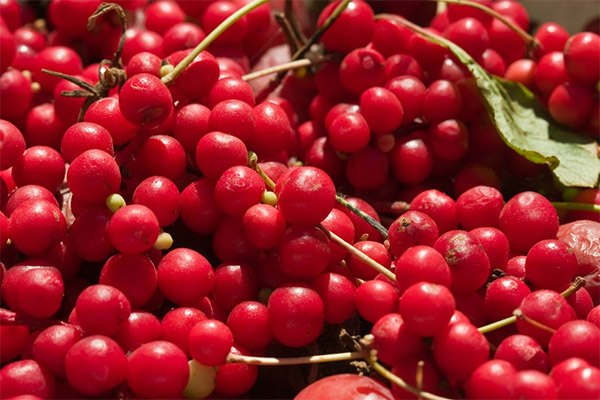
The medicinal raw material in lemongrass is all parts of the plant:
- bark - harvested in the spring;
- Vine - when the fruit is ripe;
- Leaves for tinctures - during flowering, for mucus - in the period of leaf fall;
- fruits - from the second half of September to the first frosts.
The knife for cutting the lemongrass fruits should be sharp. The brushes should be cut carefully, trying not to damage the liana. Collect the fruits should be in an enameled bucket or basket.
Important! Do not store berries unprocessed for more than a day.
It is strictly forbidden to use easily oxidizing utensils during the picking or processing of berries.
How to dry
Berries
Dry lemongrass berries without removing the stalk so that they don't run out of juice. If they are not very numerous, you can hang them in the kitchen until they are completely dry. If the crop of berries is rich, it is better to spread them on grids or wooden boards in a single layer and keep so until the berries wilt. Then bring them to a finish in an oven or electric dryer.
Dried berries become hard, wrinkled and dark burgundy. The taste is spicy, slightly bitter. To prevent mold, it's best to store them in cardboard or wooden boxes in a cool, airy place.
Leaves
Chop leaves and young shoots finely and dry in a shaded and ventilated place, spreading a thin layer on paper. Can be stored in cloth bags.
How to brew lemongrass correctly
To prepare a decoction, any part of the lemongrass is suitable. In order not to lose the valuable qualities of the lemongrass when brewing, it is necessary to follow simple rules:
- Use an enamel or glassware.
- The lid must fit tightly to the container.
- To strain the finished broth, use a tea strainer made of earthenware or silver, or four-layer gauze.
- To prepare 1 liter of broth enough 15 g of raw lemongrass in any form.
Below are a few recipes for vitamin tea from different parts of lemongrass.
Tea from the berries
Fresh (2 tbsp.) or dried (3 tbsp) berries to pour into a teapot with thick walls. Pour there the same 1 liter of boiling water, wrap with a towel and leave for 2 hours. Lemon slice or 10 grams of natural honey, added to the tea, will increase the healing power of the drink and improve its taste.
Leaf tea
2 tbsp. Pre-dried and finely chopped lemongrass leaves put in an enamel pan with 2 cups of water. Boil and simmer for 10 minutes. Cool at room temperature. A slice of lemon will complement the subtle flavor and aroma of this tea.
Tea with lemongrass and rose hips
Pour 1 tbsp. berries in a thermos. Pour 2 cups of hot water, but not boiling water. Let stand for 1 hour and strain.
Green tea with lemongrass.
Put in a teapot 1 tbsp. green tea and dried crushed lemongrass leaves. Pour 0.5 liters of boiling water and keep under a tightly closed lid for half an hour.
How to make jam from lemongrass
Berry jam has the same medicinal properties and has the same contraindications as any other product based on lemongrass.
Lemongrass jam
- The berries which have been picked and washed (1 kg) put in an enamelled saucepan and pour sugar (1.5 kg).
- After 24 hours, put on low heat until the sugar is completely dissolved. If little juice is released, add 1⁄2 cup of cold water. When the syrup becomes homogeneous, simmer for another 5-7 minutes.
- Cool at room temperature. After it has cooled completely, bring it to a boil. Boil for 5 minutes and hot pour into jars.
Lemongrass jam with apple juice
This method of preparation allows more fully preserve the healing properties of lemongrass berries.
Bring the berries to soften in water steam and rub through a sieve. 1 kg of berry puree put in an enamel bowl or pot. Add half a cup of apple juice and 1.5 kg of sugar. Boil the mixture until it thickens. Mashed potatoes still hot place in jars sterilized and cover with parchment.
Lemongrass - interesting facts about lemongrass
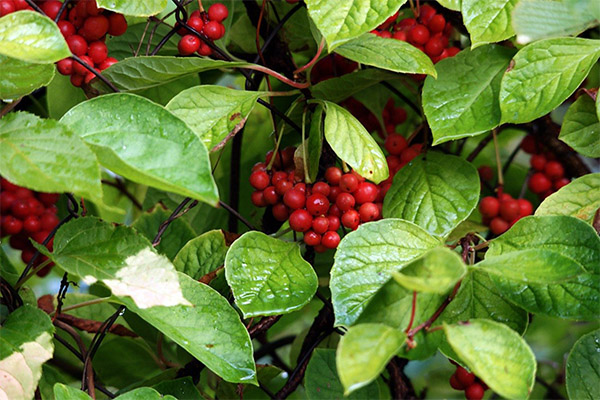
- In Chinese medicine, lemongrass was in second place after ginseng in terms of healing properties. But it has an advantage over the king of the Chinese healers: the therapeutic effect of the cultivated vines is not inferior to that of the wild one. Wild ginseng, on the other hand, is much healthier than its cultivated counterpart.
- The use of preparations based on magnolia-vine in any form reduces the risk of catching infection during epidemics of influenza by a factor of 5.
- Chinese magnolia-vine preparations stimulate the activity of the brain cells, keeping the activity at a high level and not causing exhaustion.
- In the Chinese lemongrass there are no poisonous compounds of plant origin (alkaloids, glycosides, etc.).
«Important: All information on this site is provided for informational purposes only for informational purposes only. Consult with a specialist before applying any recommendations. specialist. Neither the editors nor the authors are liable for any possible harm caused by materials."

